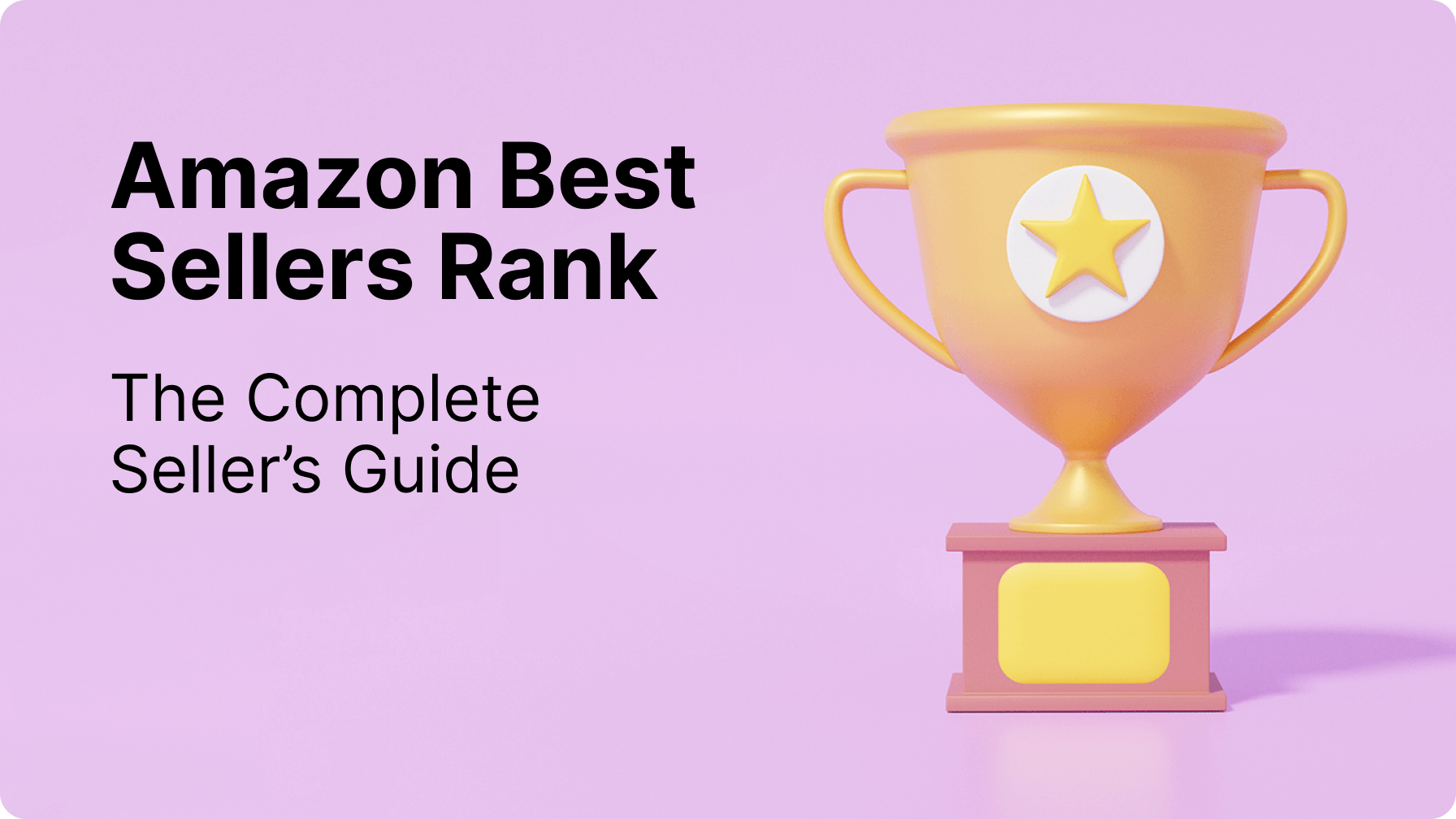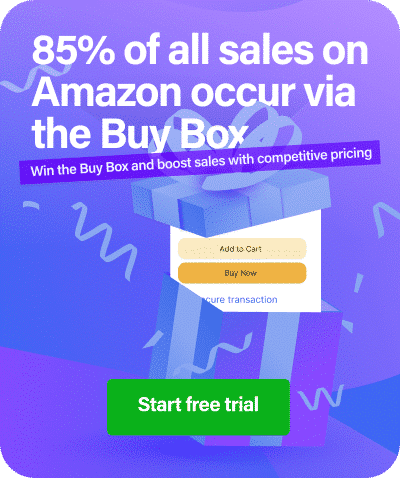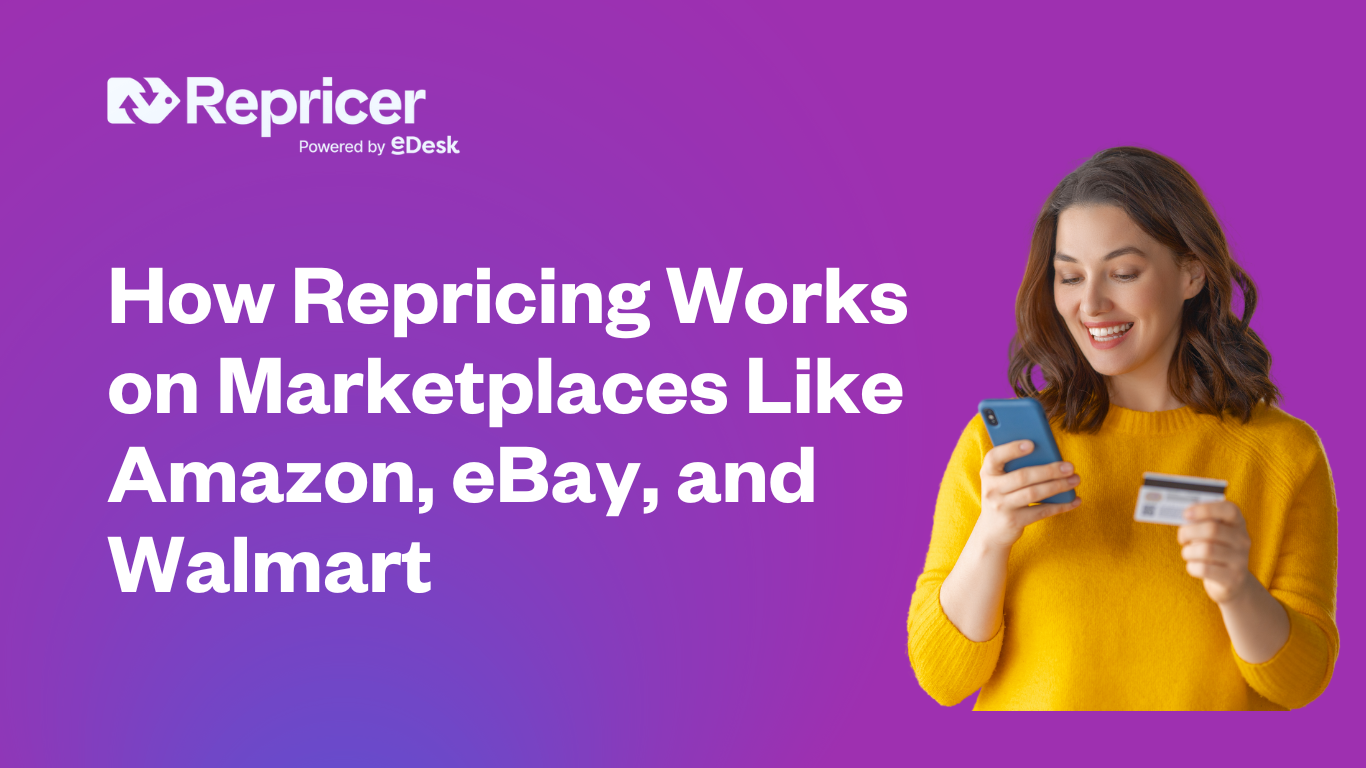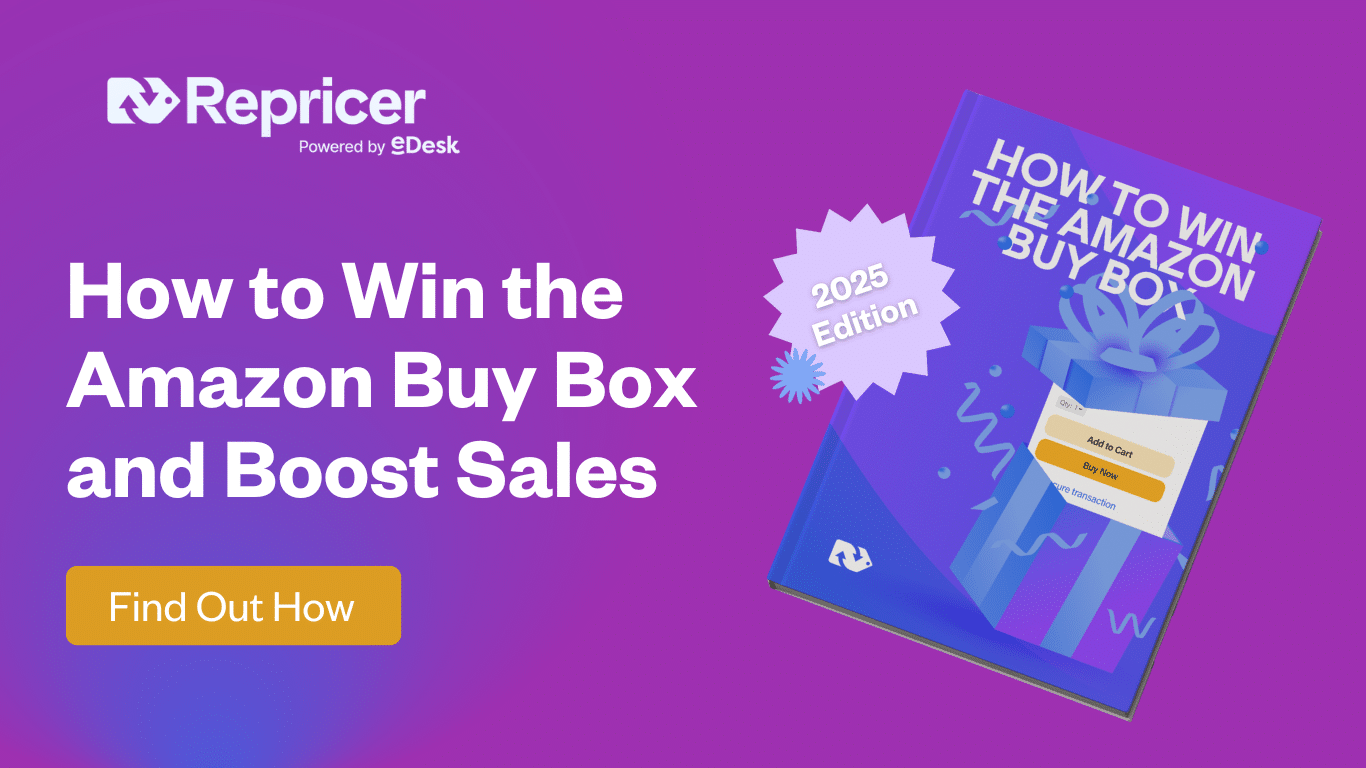Amazon’s mission statement is to “help consumers find, discover and buy anything, and to empower businesses and content creators to maximise their success.” Clearly, it is achieving that and more, seeing as Amazon holds the title of being the world’s largest online retailer.
It’s impressive how big Amazon actually is; it currently sells more than 350 million products across 36 product categories. Customers have a lot of choice when it comes to finding just the right thing. If you can dream it, it’s probably for sale on Amazon!
But how does Amazon keep track of all the items for sale on its platform? It does this by categorising each item that has sold at least once using a ranking system called the Best Sellers Rank (BSR).
For Amazon sellers, BSR is a powerful tool that helps you understand how well your products are performing and helps gauge sales potential. Understanding BSR will help you understand how to make BSR work for your business.
The best part is that you needn’t be a ‘best seller’ to have a BSR assigned to your products! You only need to have sold a product once for it to receive a ranking. The more it sells, the more that product’s ranking will change to give you a more accurate picture of where your products stack up against competitors.
Let’s look at what BSR is, how it works and how you can leverage it to help your Amazon business grow while increasing your profitability.
What is Amazon Best Sellers Rank?

The Amazon Best Sellers Rank (BSR) is a score awarded to nearly every product in Amazon’s catalogue. Every product available on Amazon that has been sold at least once is given a BSR.
BSR is an indicator of how well a product is performing on Amazon. The better performing the product, the lower its number will be. For example, a high-performing product will be at, say, #200, whereas a product performing less well will rank at #2,000.
So, essentially, products with low sales will have high BSRs, and those with high sales will have low BSRs. The more sales you make, the lower your BSR becomes.
Product performance is limited to those in its category, which means that you wouldn’t compare the BSR of a product in the Home & Kitchen category with a product in the Household & Baby category. Since they are two separate categories, their products will be ranked against other products in the same category.
For this reason, products can have multiple BSRs if the product is listed across multiple categories. In each category, an individual product’s ranking indicates how well that product is performing within the category.
Subcategories can be particularly useful when analysing a product’s ranking. The subcategory best seller lists give you more detailed information about whether a product is performing well against its direct competitors than the more broad category top-tier best seller lists.
Also, it’s worth noting that Amazon’s BSR fluctuates hourly, meaning that the more recently a product is sold, the more its ranking is subject to change. In this way, BSR is a highly valuable metric for Amazon sellers because it can inform you of the demand for a specific product. This helps in the research phase of deciding which products to sell in your Amazon store.
Let’s look at how BSR is calculated.
How is the Best Sellers Rank Calculated?
Like most algorithms, BSR is calculated based on proprietary metrics, so we don’t fully know how Amazon determines its calculations, but what we do know is that sales are the primary driver of the metric. So this is one instance in which user reviews don’t come into play.
Several key factors are considered when coming up with each ranking. They include:
- Current and past sales
- Similar competitor products
- Pricing, including sales and promotions
Because the ranking is updated every hour, if you sell several more of the same product than your competitor in the past hour, your ranking will likely be a lower number than your competitors (a reminder that the lower the number, the better the ranking!).
We say ‘likely’ because historical sales are also taken into account. Just because you’ve sold a lot of products in the past hour doesn’t mean you’ll outrank your competitor if they have sold more products than you historically. This use of historical sales in addition to current sales keeps the rankings fair and consistent.
How Does Amazon BSR Differ from Organic Rank?
It is important to know that your Amazon BSR is separate from your organic ranking because it is the organic ranking that determines where your product will feature when people search for that product on Amazon.
BSR is not taken into account in Amazon’s search results. That is entirely driven by organic ranking, which is based on keywords. So it’s important to make sure that, regardless of your BSR, you are still using the right keywords in your product title and descriptions to reach the most customers possible. This will help you achieve a higher organic ranking on Amazon.
On the other hand, BSR is only concerned with sales, not which keywords you use. Yet, the two rankings are related since your sales are based on how well your keywords perform in the search. The higher your products come up in searches versus those of your competitors, can elevate your BSR against that of competitors.
Paradoxically, it is possible to have a top-selling product when it comes to organic search while not having a number one BSR. This is because Amazon prioritises keyword relevance over best seller rankings in search.
For this reason, BSR is a better predictor of sales volume and how frequently a product is sold rather than its overall popularity.
How Does Best Sellers Ranking Benefit Sellers?
Having insights into BSR can benefit sellers in several ways.
1. Product Research
Amazon sellers need to know which profitable products to sell. BSR can help new sellers and experienced sellers gain insights into product trends and what they might like to carry in their Amazon stores.
For newer sellers unsure of which products to sell, BSR can be a guideline for which products are selling at higher volumes on Amazon. By looking at BSR, you can see which products are selling the most (they will have lower BSR numbers) and then decide whether you’d like to compete against established sellers by selling those products as well. It gives you a guide as to what the most in-demand products are.

For more experienced sellers who already have their product lines established, Amazon’s Best Sellers Rank can help monitor competitors to see which of them (if any) have a higher ranking than you.
If a seller with similar products has a lower BSR than you, it might be a sign that you need to adjust your keywords to increase your visibility in the search results to capture more market share.
2. Determining Product Sales Performance
You can also use BSR to work out the sales performance of a specific product. In particular, you might be interested to know how often a product sells on Amazon.
For example, you can start by taking your own BSR and comparing it to the number of sales you’ve made that month. That will roughly give you an idea of how many sales must be made to achieve that particular BSR.
Then, you can look at historical data (for example, from 12 months ago) and work out how many sales you made to achieve last year’s BSR.
This gives you a basis of comparison for other products with a similar volume of sales. You can then look at other products with a similar BSR to get an idea of how many sales you’d need to make per month to achieve a particular BSR.
This can be very helpful when determining which other products to sell and keeping an eye on your competition. If a competitor has a higher BSR on the same products, you know that they must be selling higher volumes, so understanding their BSR can help you decide whether you need to adjust your marketing techniques to better compete with them.
Improving Your Amazon Best Sellers Rank
If your product reaches a BSR between 1 and 100, it will feature in the best seller lists. But if your BSR isn’t where you want it to be (or where you think it could be), you’ll need to increase sales to improve your score.
Once you’ve identified your BSR, you may wish to start improving it, and there are several strategies you can use to get a lower (better) BSR.
1. Review the Keywords in Your Product Title & Description

Using the correct keywords is everything. Keywords drive search results on Amazon, so you want to make sure you’re using the right keywords to help your product come out on top in searches.
This means updating keywords in your product title and the product description since both factor into search results. Your keywords should be relevant to the description of the product you’re selling.
2. Invest in High-Quality Images
Shopping online is a visual experience. Customers want to see an accurate picture of what it is they are buying.
By investing in high-quality product imagery that features a selection of product photos captured at different angles using professional backgrounds, you give your products the best chance of standing out and being added to cart by customers.
Videos can help in this regard too. They can bring your product to life by showing the customer exactly how it works in real life, elevating their customer experience.
3. Leverage Amazon FBA and Prime
Amazon gives preference to sellers who use their fulfilment service. Doing so also makes you eligible for offering Prime on your listings, making your listing attractive to more customers.
Both FBA and Prime are trusted by many Amazon customers, so adding these options can increase your sales which, in turn, will lead to a higher BSR.
4. Keep Your Prices Competitive
A surefire way of winning against your competitors is by keeping your prices competitive and in line with (or even lower than) what other sellers are offering for the same products. Next up – pricing is so important that we felt it deserved its own section!
The Importance of Pricing in Best Sellers Rank
It is a mistake to disregard the importance of pricing when looking to improve your BSR. Many sellers will look at sales volume alone and won’t consider the crucial role that pricing plays in achieving better volumes.
As we’ve established, the way to improve your BSR is by selling more. And to sell more, you need to be on the ball against your competitors! But there are many reasons why a customer might choose to buy from you rather than a competitor.
We’ve mentioned factors such as keywords in organic search, product imagery, and Prime offerings, but another important key factor that goes into whether a customer will choose to shop with you or a competitor is price.
Simply stated, customers always want to save money. If someone is selling the same item, but for slightly less, the customer will almost always choose the cheaper product.
But with a vast product category on Amazon, how can you make sure you are always staying competitive? After all, prices can fluctuate depending on market demand, supply chain availability and other volatile factors.
This is where repricing software comes in. This intelligent software takes the guesswork out of pricing because its sophisticated technology means it is constantly scanning against your competitors to ensure that you are pricing your products appropriately.
Repricing doesn’t mean that you lower your prices to your detriment. You can set specific rules, including floor pricing, to guarantee that you stay competitive without compromising your profit margins.
Significantly, how you price your products also determines whether you will win the Amazon Buy Box. The Buy Box is highly coveted amongst sellers because nearly 85% of sales go to those who are in the Buy Box. To award the Buy Box, Amazon’s algorithm considers factors such as fulfilment, customer feedback, inventory depth and, yes, price. That is why repricing is a must!
Taken in totality, we can see why repricing is so important and how it relates to improving your Amazon Best Sellers Rank. The better priced your items are, the more likely you’ll win the Buy Box and the more you’ll sell.
Remember, a larger volume of sales = better BSR.
Using the Amazon Best Sellers Rank to Your Advantage
Some sellers may dismiss the Amazon Best Sellers Rank as a vanity metric. But to do so is a mistake because you miss the opportunity to use its insights to improve your positioning and profits.
By taking the time to understand your ranking and that of your competitors, you can improve your BSR and your bottom line along with it. Using BSR to improve your product rankings on Amazon will help you achieve more significant growth and success in your Amazon business – and that’s something every seller is after!
If you’re even interested in being able to increase your sales and revenue, then book your 14-day free trial now.





